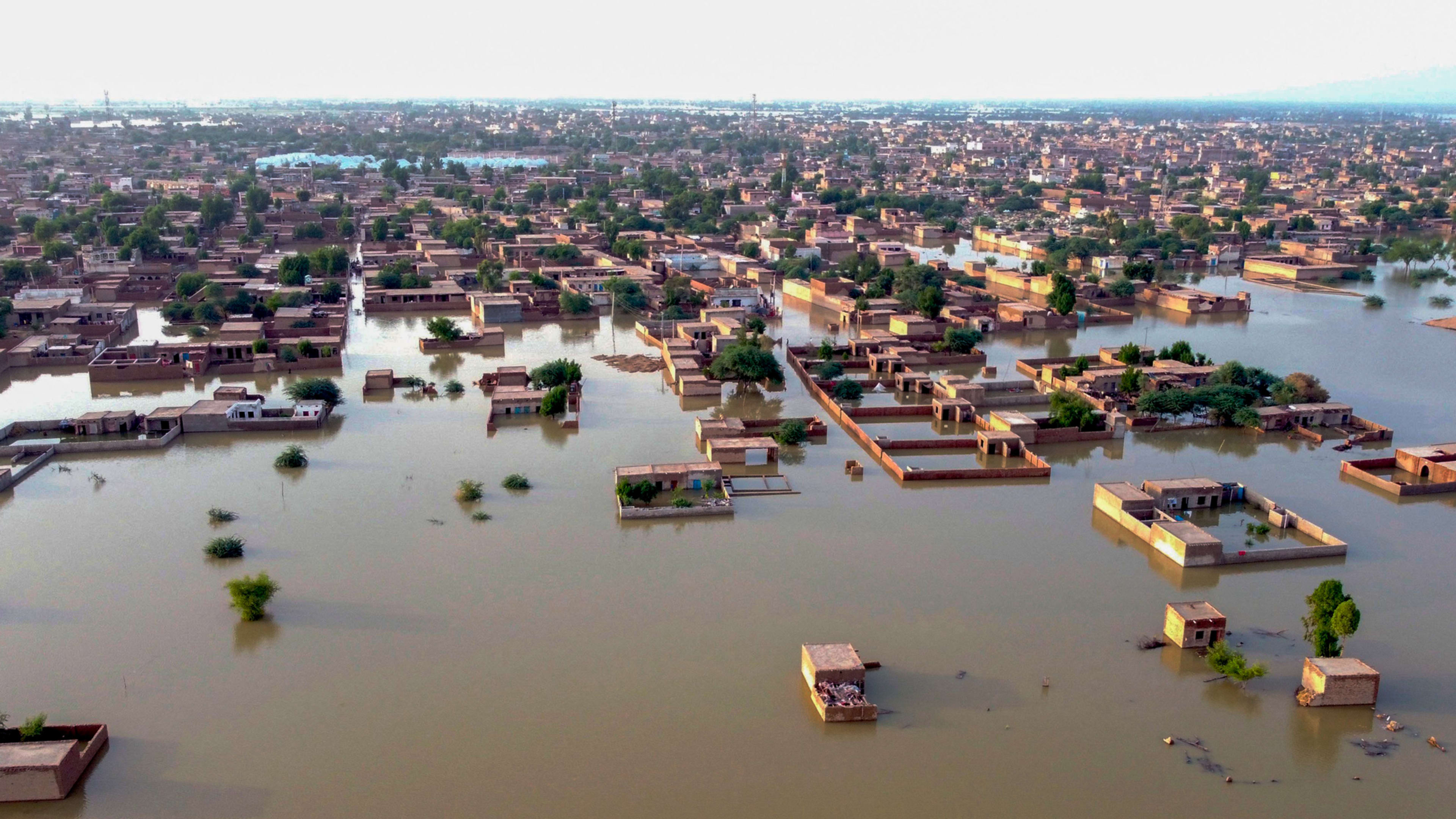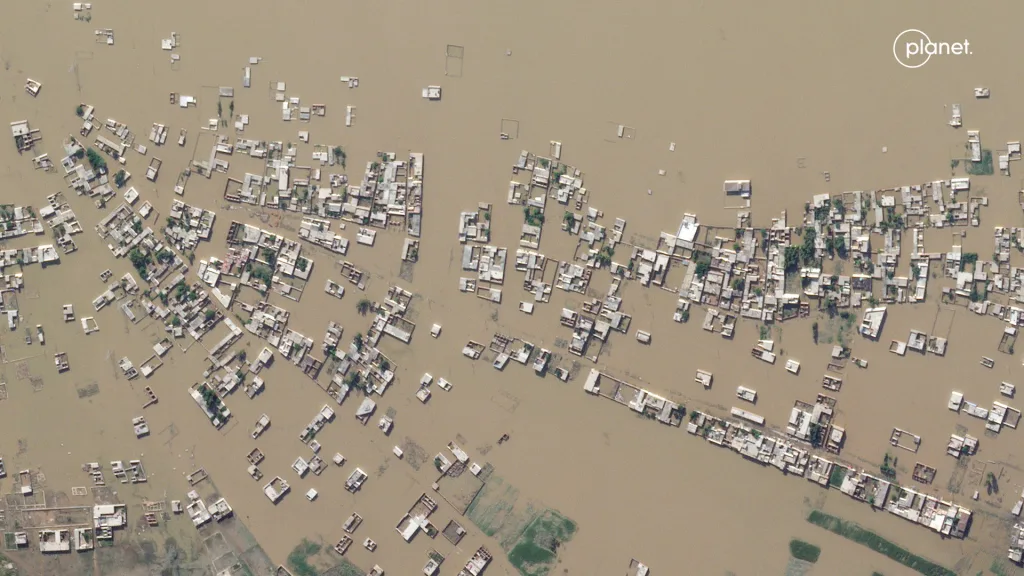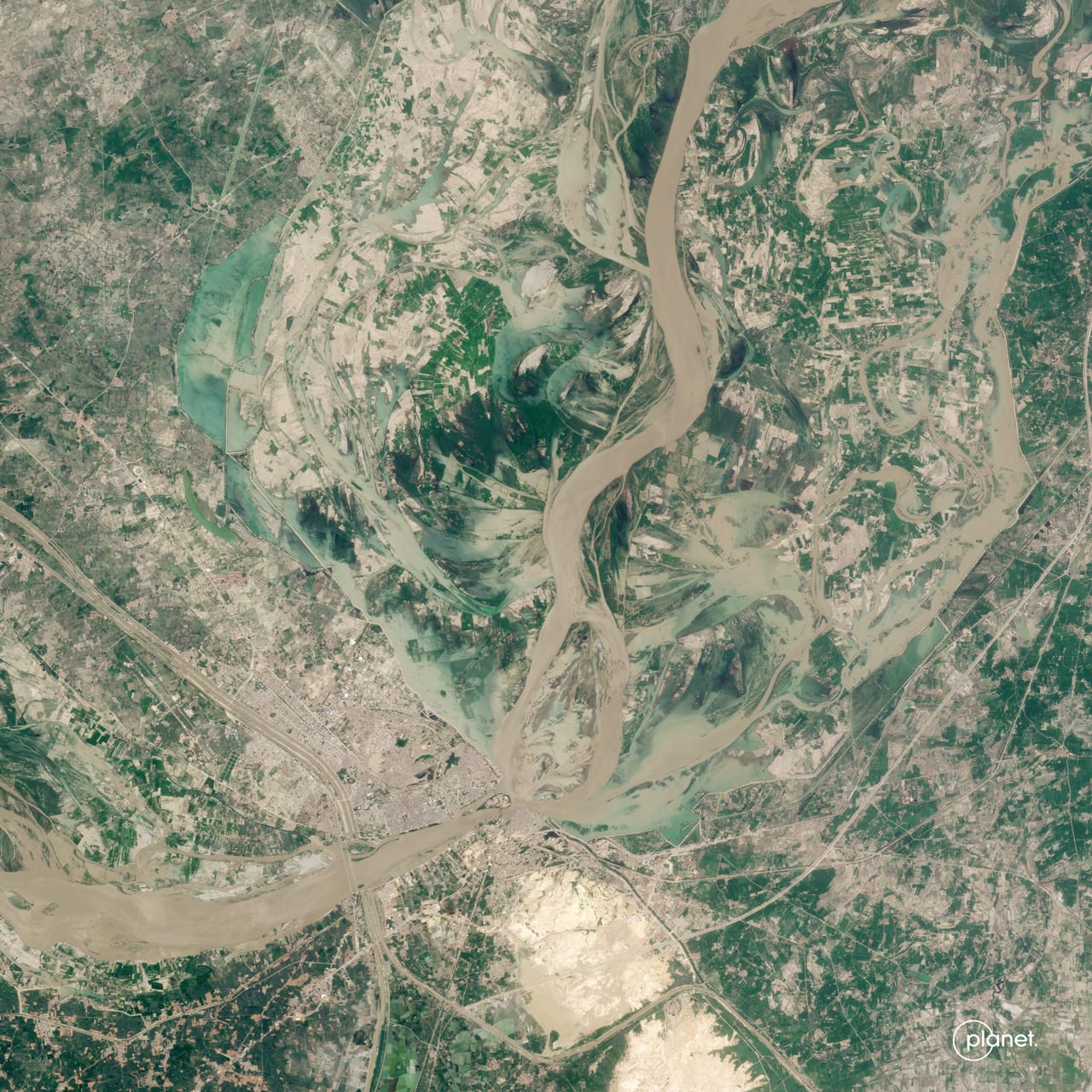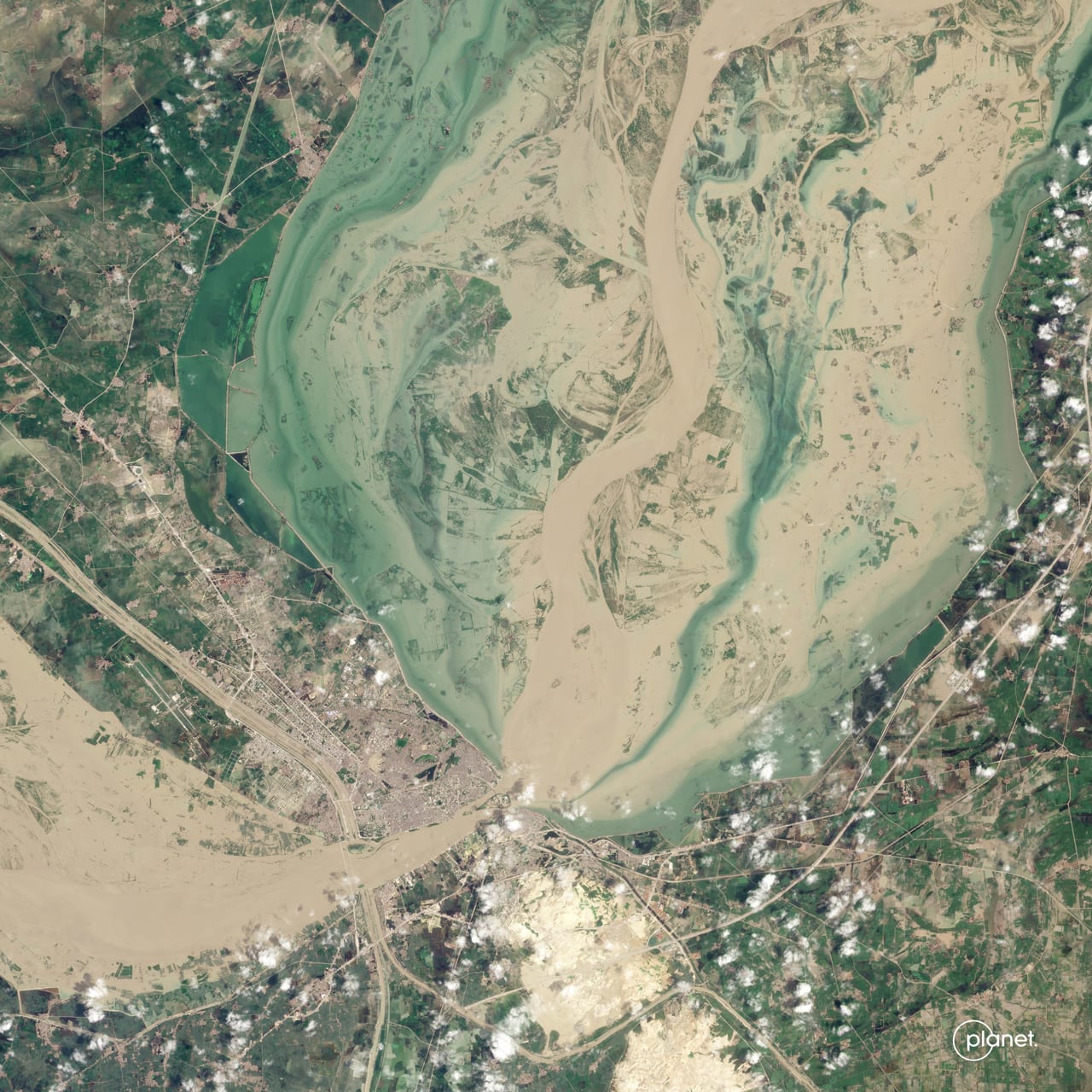After weeks of relentless monsoon rains—and after a heat wave in the spring that made glaciers melt faster—more than a third of Pakistan is underwater. More than 1,300 people have died. Millions more have lost their homes.
The scale of the devastation is visible from space. In the city of Nowshera, one image shows a community of homes in June. By the end of August, every home was surrounded by water.
On farms, annual monsoon rains are usually critical to help crops grow. This year, because there has been so much more rain than usual—in some areas, five times as much—fields are completely flooded. The country was already struggling with rising food prices before the floods. Now, with the majority of crops ruined, the country is facing a food crisis.
[Image: Planet Labs PBC]Rivers have sprawled far beyond their banks, forming lakes. In the city of Sukkur, in one of the hardest-hit parts of the country, some people are now living in tents along a highway, one of the few places that’s still above the water.
Scientists haven’t yet linked the current disaster to climate change, but climate change is making extreme rainfall much more likely. As the atmosphere gets hotter, it holds more moisture. Heat waves can also increase the flow of humid air over land in monsoons. Earlier this year, a study found that a deadly heat wave in Pakistan in the spring was 30 times more likely because of climate change. That also meant that the country’s huge glaciers started melting faster, leading to flooding and landslides.
The situation is worse because of political turmoil, corruption, and poor planning. But the climate crisis is making disasters so extreme that it would arguably be difficult to adapt even if the government was functioning well. After floods in 2010, one bridge was rebuilt 16 feet higher. But the floods this year have been so much worse that it’s now underwater again.
Pakistan is one of the most vulnerable countries in the world when it comes to disasters from a problem it didn’t create: The country emits less than 1% of global climate pollution. Richer countries that have polluted more need to now do more to help, says Sherry Rehman, the country’s climate minister. “There is so much loss and damage with so little reparations to countries that contributed so little to the world’s carbon footprint that obviously the bargain made between the global north and global south is not working,” she told the Guardian.
Recognize your brand’s excellence by applying to this year’s Brands That Matter Awards before the early-rate deadline, May 3.




